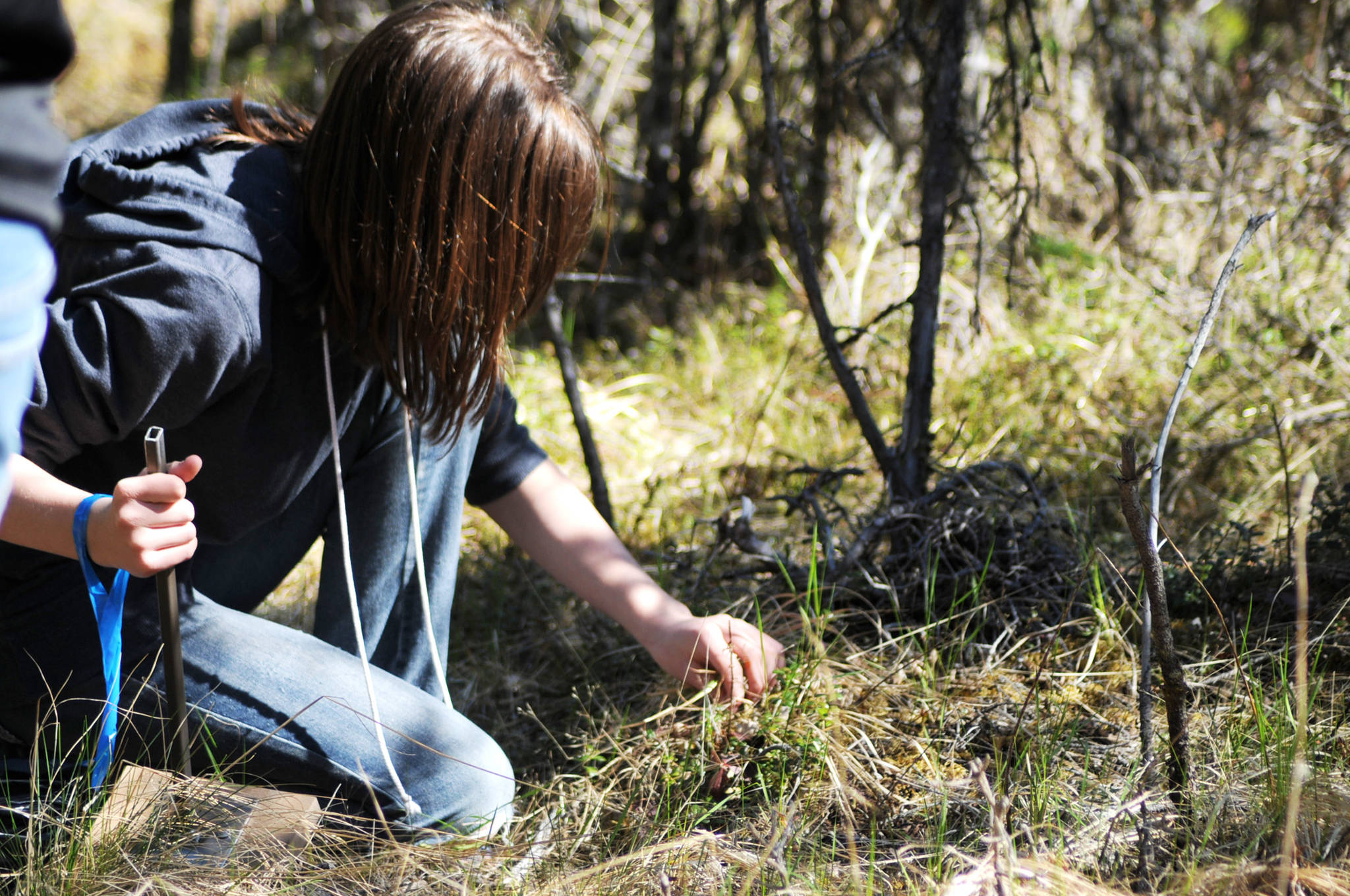Almost as soon as they made it through the back gate at Tustumena Elementary School, Shonia Werner’s sixth-grade students were scampering down the trail in search of plants.
Not just any plants, though — after all, they were in a forest in springtime. Most of them were equipped with woodcut signs bearing the common and scientific names of native plants along the path, and they were searching for specimens to plant their signs next to.
That can be harder than it sounds. Student Jordan Hinz, equipped with a sign for black cottonwood trees, peered at various trees as he walked, wondering which one would meet the criteria. Upon finding a likely specimen, he asked for confirmation from Jen Hester, the invasive species specialist and Adopt-A-Stream program coordinator for the Kenai Watershed Forum.
Hester has been working with classes in the Kenai Peninsula Borough School District throughout the year as part of the Adopt-A-Stream program, in which elementary school students work with the Kenai Watershed Forum to visit area streams to make observations and test water quality, among other activities. But the plant identification signs were extra.
“That was all (the students’) idea,” Hester said. “The high schoolers worked with them to make the signs.”
Sixth-grader Cadence Cooper said the class came up with the idea for the signs as a group . On May 22, the second-to-last day of school, the class headed out to the trails behind the school where many of them cross-country skied in the winter to place the signs.
“It was one of our class goals, to improve the trail,” she said.
They weren’t the only class to improve a neighboring trail. The previous Friday, Jason Daniels’ fifth-grade glass at Kalifornsky Beach Elementary trooped out into the gloomy gray weather to clean up and mark native plants on their own trail, which runs from the elementary school across Community College Drive out to Slikok Creek.
The Tustumena class found relatively little trash or trail damage, but the K-Beach Elementary class had plenty of work to do. Grass had grown up between the slats of the wooden boardwalks across wetlands, live trees stretched their branches across the walkway and dead ones impeded passage. While a parent chaperone took on the tree branches that needed cutting with a handsaw, Hester handed out tools to the students to clean up the trail.
Once they made it out to the salmon viewing platform on Slikok Creek, they began working on their own plant identification signs. Though the ones the K-Beach students put together are only printouts in laminate covers for now, they’ll be wood signs in the future, Daniels said. The fifth-grade class next year will also work on replacing a section of the boardwalk along with their regular water quality sampling, he said.
“They’re getting to see a lot of different kinds of terrain along the trail, with the wetlands,” she said. “I came out early and (identified) the plants out here, then the kids made the signs.”
K-Beach student Mya Fielden said her favorite part of the work was being out on the trail. “I like that we actually got to come out here.”
Students in both classes said they enjoyed getting the chance to be outside. Between flurries of working on the trail and pointing out plants, the K-Beach students peered into the creeks, snagged trash from along the walkway and took measurements — with help from Hester and Daniels — on the low-lying sections of the path that need a new boardwalk section.
Several of Werner’s students at Tustumena Elementary mentioned an earlier trip the class took to the Alaska Center for Coastal Studies’ Peterson Bay Field Station on the south side of Kachemak Bay, where they did more wildlife identification work.
“We try to get outside as much as we can,” Werner said.
Reach Elizabeth Earl at eearl@peninsulaclarion.com.

